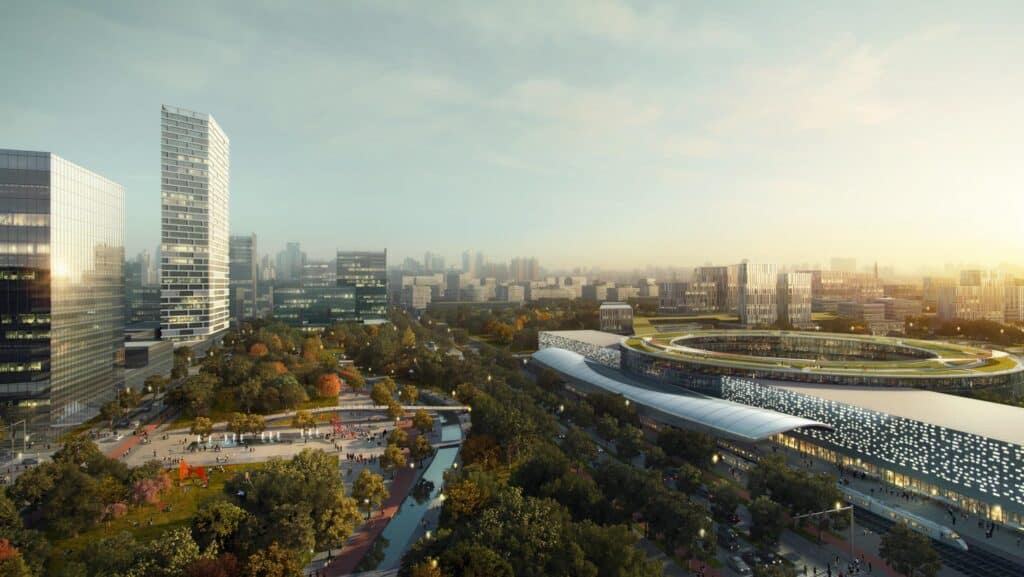Describe Metro Manila’s urban development in one word and many possibilities come to mind – dense, congested, gridlocked, to name a few. Now, 100 kilometers north of the metro, developers, enterprises, and ordinary Filipinos have the opportunity to shape New Clark City in an area 40 times the size of BGC – the Philippines’ last master planned community.
But how do we approach designing the city of tomorrow and what implications does this have on the properties that would define Clark’s cityscape? Sylvester Wong, vice president of AECOM, the master planner of New Clark City, offers some lessons in human-centric development.

“A lot of people think that master planning is about physical design,” says Wong, “but good city planning is about people – who are the people who would want to live and work there?”
He explains that the cities of tomorrow need to attract the best talent from IT, media, design, and other creative disciplines – industries that define future innovations instead of succumbing to them. If manufacturing hubs and free-trade zones represent the urban development models of the past, the city of the future needs to be a “knowledge-based economy,” playing host to a diverse set of industries and led by an equally diverse set of thinkers.
How does a master planner attract the best and brightest to a new and unfamiliar locale?
Prioritize quality of life through human-centered design, says Wong. Cities need to be “permeable” as opposed to monolithic. Instead of eight-lane roads surrounding a dense center, there should be shorter blocks, mixed-use developments, abundant parks, and narrower but multi-use roads that prioritize pedestrians and not cars. Thus, it should encourage movement through and around the city and making green space accessible to all instead of a privileged few.

Another crucial factor is incorporating the unique factors inherent to that region. “Every place has its own advantages and so it was about figuring out what was unique to Clark and then harnessing that,” says Wong. He states that master planning for New Clark City meant building on Central Luzon’s legacy as the nation’s agri-industrial capital, as well as its world-class aviation infrastructure and proximity to Subic port. In this way, Clark and other new cities like it can attract the best in local and regional talent to take traditional industries to the next level.
Above all, cities need to leverage technology as a means to empower people. “The best smart cities are data driven and technology agnostic,” explains Wong. Diverse tech platforms should seamlessly work together to improve quality of life, while the analysis of the vast amounts of collected data creates new opportunities for employment and innovation.

“Technology needs to be seamlessly integrated into all aspects of life, from smart grids and street lamps, to mobility, safety, security and healthcare,” says Wong. In essence, every property in the city of the future should be its own technological hub, constantly interfacing with adjacent systems to enhance quality of life and ultimately elevate the city to be more competitive and resilient.

and rail links.
Resilience takes on new meaning in the context of a city. For Wong, it is not just physical and environmental resilience at stake, but economic. As important as it is to prepare for the inevitable consequences of climate change and natural disasters, “the true measure of resilience is when the people of a city are able to stay globally competitive as the world changes,” says Wong. The implications of this for a new city such as Clark are that workplaces need to be collaborative spaces – R&D centers, laboratories, design studios, and the like, to create knowledge-driven communities that are resilient to technological and economic shifts.
As with any large endeavors, master planning is a work in progress. Over the next few decades, New Clark City is expected to house one million residents and create 800,000 new jobs. But in the short term, the priority is to attract the right mix of first movers who would make the city their own and continually evolve it. Ultimately, Wong projects, the city may not look anything like the original sketch, “but if what you drew motivated people to come and invest, and keep evolving it, then that’s a great master plan.”
Article and Photo originally posted by Manila Bulletin last June 12, 2021 4:37am and written by Joseph C. Tay.







More Stories
Vista Land Celebrates 50 Years with Sandiwa: An Event Honoring Leadership, Legacy, and the Filipino Dream of Homeownership
Vista Land Celebrates Love Month in Ilocos Region
Vista Land Bridges Cebuano Heritage and Progress with Valencia by Vista Estates